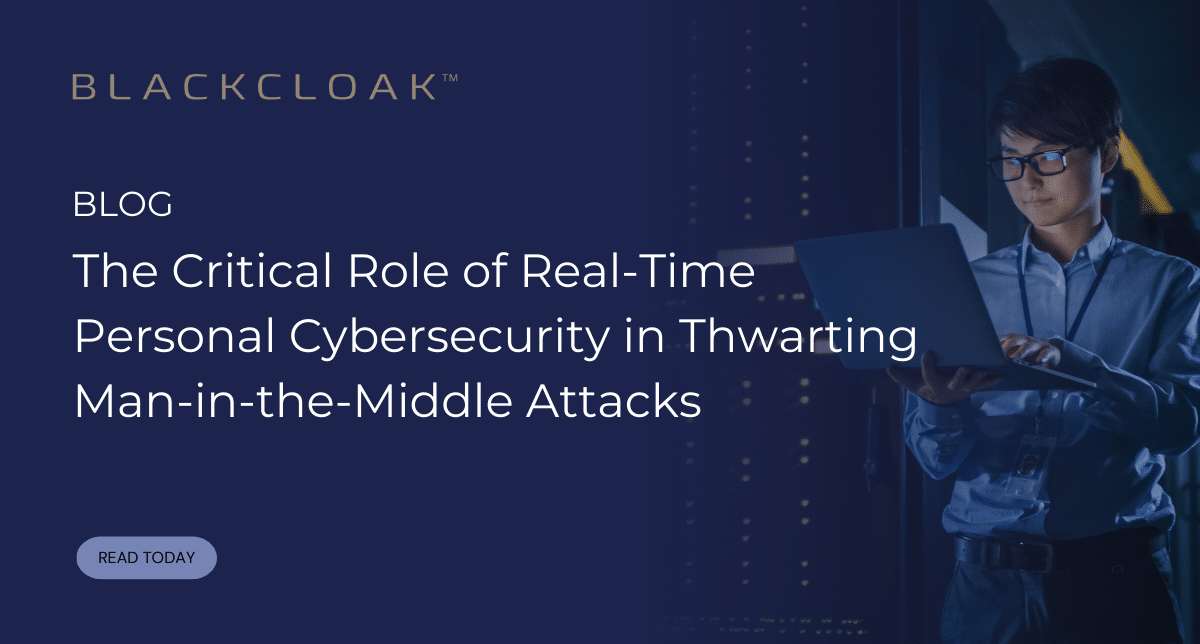The Critical Role of Real-Time Personal Cybersecurity in Thwarting Man-in-the-Middle Attacks

Cybersecurity threats loom larger than ever, with man-in-the-middle (MITM) attacks representing a particularly insidious method by which hackers intercept and manipulate the communication between two parties. This breach not only compromises personal information but also undermines the integrity of digital interactions. As such, adopting a real-time personal cybersecurity approach becomes not just advisable but essential. This blog post delves into the importance of such proactive measures in responding to and prevent MITM attacks.
Understanding the Threat
A MITM attack occurs when a hacker inserts themselves into a two-party transaction or communication without the knowledge of either party. Once in this position, the attacker can intercept, alter, or fabricate messages between the two. The implications range from stolen personal information to financial fraud, making it a formidable challenge to online security.
The Necessity of Real-Time Response
The dynamic nature of MITM attacks demands an equally dynamic response. Traditional, reactive cybersecurity measures often fall short, as they typically address threats only after they have been identified and cataloged. This delay creates a window of opportunity for attackers to exploit vulnerabilities. In contrast, a real-time personal cybersecurity approach involves continuously monitoring and analyzing data traffic to detect anomalies as they occur, significantly reducing the window of opportunity for attackers.
Prevent MITM Attacks By Implementing Real-Time Personal Cybersecurity
Use of Encrypted Connections: Ensuring that all online activity occurs over secure, encrypted connections (such as those provided by HTTPS protocols) is a fundamental step. Encryption acts as a deterrent to MITM attacks by making intercepted data difficult, if not impossible, to decipher.
Employment of VPN Services: A Virtual Private Network (VPN) encrypts internet traffic, routing it through a secure server. This not only masks the user’s IP address, but also adds an additional layer of encryption, complicating any attempted interception by a third party.
Adoption of Multi-Factor Authentication (MFA): MFA requires more than one form of verification to gain access to accounts, significantly reducing the risk of unauthorized access even if an attacker manages to intercept one form of credentials. This can be done via SMS text messages, but should be conducted through the use of authenticator apps or a physical security key.
Regular Software Updates: Keeping all software updated, including operating systems, applications, and antivirus programs, closes security loopholes that attackers exploit in MITM attacks. These updates often include patches for newly discovered vulnerabilities.
Education and Awareness: Understanding the signs of a MITM attack enables individuals to avoid suspicious online behavior and recognize phishing attempts. Education on secure online practices is a critical component of a real-time cybersecurity strategy.
The Impact of Proactivity
By adopting a real-time approach to personal cybersecurity, individuals significantly enhance their resilience against MITM attacks. This proactive stance not only protects personal information, but also contributes to the broader security ecosystem, making it more difficult for attackers to succeed in their endeavors.
As the digital landscape evolves, so too must our approach to cybersecurity. The adoption of a real-time personal cybersecurity strategy is a powerful tool in the arsenal against MITM attacks, offering not just protection, but peace of mind in an increasingly interconnected world. Let us all take responsibility for our digital safety and embrace these practices to safeguard our personal information against the ever-present threat of cyber intrusion.
BlackCloak: Helping Executives Prevent MITM Attacks
Are you interested in learning how BlackCloak’s award-winning personal cybersecurity services mitigate the threats of Man-in-the-Middle cyberattacks for c-suite and high-net-worth individuals? Request a demo today.










